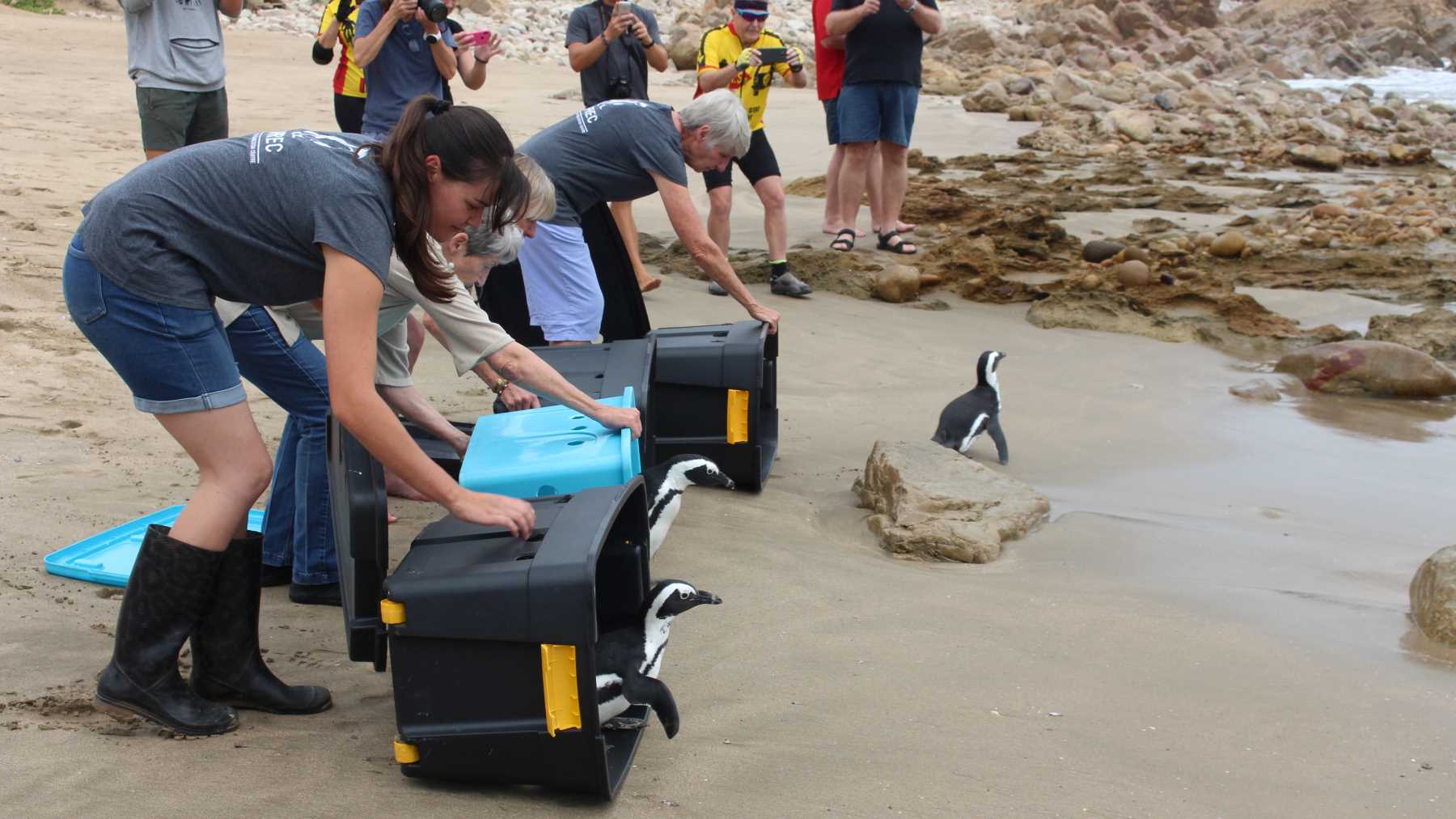
Journalism adventures: Watching SAPREC penguins swim home
On the very first day of the February travel and environmental journalism program, we were part of something special. We saw four healthy African penguins returning home. This after their rehabilitation at the Seabird and Penguin Rescue Centre (SAPREC). We volunteered at the rehab and care centre in Mossdustria for the morning of 3 February. Afterwards, we drove with the rest of the volunteers to Fransmanshoek conservancy. Here, we watched the release of the four fully rehabilitated penguins.
Africa Media
Academy
Building the next generation of wildlife and environmental media specialists
Volunteering with SAPREC
When we got to the centre, each of us received a pair of gumboots and some overalls to wear. Working with penguins can be messy work! First, we watched Shimunye (a permanent SAPREC employee) and another volunteer feed the penguins. One by one, they took them out of their enclosure to give each of them some fish. They gobbled these up whole the second they got hold of it. We helped carry the penguins to another enclosure with a pool. There’s a very specific way of carrying a penguin to ensure he doesn’t bite you. A penguin beak really hurts when you’re not careful!
We helped clean out the enclosures with a water hose. Then we watched Shimunye separate four of the penguins from the rest. These have been tested and cleared for release back into the ocean. Pin, Scar, Scaredy Cat and Nick each suffered from a different injury or illness. Every new penguin’s name is always given according to what was wrong with him. Scar, for instance, got his name from the large seal bite that he’s now recovered from. Now, all four of them have been rehabilitated and are in good enough health to make it on their own in the wild.
Wildlife filmmaking
Produce your own 5 minute wildlife documentary in wild Africa
The release
The Fransmanshoek conservancy is on a natural rock point just past Vlees Bay. SAPREC uses this site for all their releases, because it has direct access to the open ocean. What’s more, it’s close to where the local penguin colony resides. Being within a protected area, the patrolling rangers can contact SAPREC after finding a penguin on the shore.
We arrived at Fransmanshoek. The team of volunteers carried the four containers with penguins to the beach. Together, they dipped the crates forward towards the ocean as we watched. Tentative at first, each of the penguins emerged, waddling forward and grouping together. They immediately entered the shallow waves among the rocks. Then they were on their way, floating on their bellies. The group of people on the beach watched until the four bobbing heads were no more than specks on the horizon.
We interviewed the founder of SAPREC, Carol Walton, about the release and penguin conservation. She has been in the business of saving penguins and seabirds since the 90s. SAPREC is doing its part for the environment by helping one of many species in our world in need of rescuing. Africa Media’s journalists were happy to be part of it, and we’re also happy to have a published article on the experience written by Rebecca. Keep an eye out for its publication!
If you’d like to contribute to SAPREC’s rehabilitation efforts, help them out by donating to them here.
Blogger Profile - Rouxne van der Westhuizen
Rouxne has an Honours degree in journalism and media studies. She is the course director for the Travel and Environmental Journalism program and specialises in wildlife conservation writing, travel journalism and blogging.
Environmental & Travel Journalism
Explore Africa whilst training to become an environmental or travel journalist
Wildlife Photography
Build a professional photographic portfolio whilst exploring wild Africa




